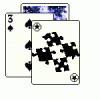I think it would help immensely if you can give examples of games that do / don't use buffered jumps.
In fact if you had such a list of examples, you probably wouldn't even need our opinion, you could just emulate the one that feels best for your situation.
One game that always felt really good and responsive and fair were the Super Mario games. Did they use buffered jumps? I assume not but cant be sure.
I already do it, myself, and I see no reason not to do it. However, there are some classic platformers that don't do it, such as Megaman X and other Capcom games, so I'm just more curious as to why some platformers don't do it. Since I can't exactly ask Snes game developers why they didn't include it, I figured there might be some indie devs who might have reasons for not including it in their own games.
Also for reference, Mario World does it.









